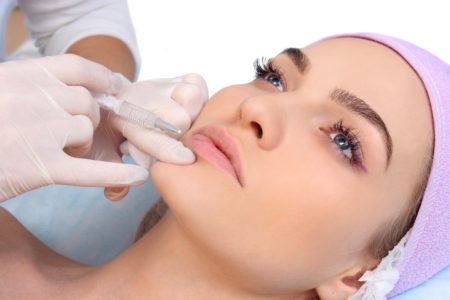
For years, injectable dermal fillers have been the extremely popular, effective and the standard treatment for facial lines and creases and for providing volume in order to contour and sculpt areas. Commonly used ones include the Juvederm family of products (Ultra®, Ultra Plus®, Volbella®, Vollure® and Voluma ®), Restylane®, Radiesse® and Sculptra®. In fact, the latest available statistics from the American Society of Plastic Surgeons (ASPS) reveal that approximately 2.6 million treatments were administered in 2016 making it the second most common cosmetic procedure by far and with only Botox® being more common (almost three times as much!).

For all their popularity and essentially being a cosmetic commodity, patients should understand that there are some risks associated with the injection of these soft tissue fillers. Most of the risks are rather benign, time limited and rarely permanent though on extremely rare occasions, catastrophic consequences can occur due to poor technique, inadvisable and risky injections or just plain bad luck.
The most common and untoward issues associated with these dermal fillers includes bruising, swelling, asymmetries, over-correction, under-correction and infection with the latter especially being very uncommon. Fortunately, all of these are time limited and without long term consequences.
On rare occasions, the filler can be accidentally injected into an artery resulting in blockage somewhere along its course resulting in necrosis of skin. Without adequate blood supply, the skin turns black and dies and one is ultimately left with a facial scar that can be quite noticeable.
Definitely the most severe risk of all is partial or total blindness and there have been a few reported cases of these over the years in this country. The cause of blindness in these cases is the injection of filler into a small artery that ultimately travels to the eye. High risk injection areas for this are the nose and the frown line area of the forehead (glabella).
The relative incidence and severity of risks can be markedly reduced by being treated by an injector who is well trained, skillful, very experienced, knowledgeable and properly cautious. Typically, this would include some physicians who have a genuine interest in personally providing this service – like some plastic surgeons and dermatologists. I, in fact, do all the injections for my patients.
Unfortunately, the vast majority of injectors employed in physician offices and spas or practicing out of storefronts don’t meet these criteria. The same is usually true for physician injectors whose primary training was in other areas of medicine.
So if you are strongly considering treatment with dermal fillers, do your research and don’t base your decision on who is the cheapest.
You may pay dearly in the end.
For more information on dermal fillers such as Juvederm® Ultra Plus or Volbella® or to schedule your complimentary consultation, please call my office at (480) 451-3000.
Steven H. Turkeltaub, M.D. P.C.
Scottsdale and Phoenix, Arizona
